Search results for: 'plate'
-
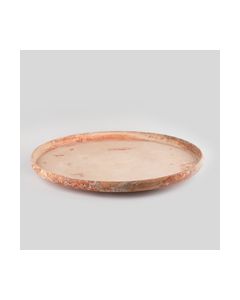 Large and perfectly preserved Roman plate - found in the Mediterranean
Large and perfectly preserved Roman plate - found in the MediterraneanPerfekter Zustand. Vollständig erhalten und nicht restauriert. Sehr selten für eine Keramik dieser Größe. Mit kleinem Standring.
Price: on request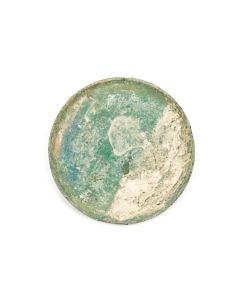 Roman mirror from Baalbek
Roman mirror from BaalbekThe bronze disc is the base plate of a bronze mirror, that was once attached to a handle and coated with a reflective metal layer. Typical for upper class Roman households during Imperial times.
Price: on request Roman mirror from Baalbek
Roman mirror from BaalbekThe bronze disc is the base plate of a bronze mirror, that was once attached to a handle and coated with a reflective metal layer. Typical for upper class Roman households during Imperial times.
Price: on request Cypriot bowl
Cypriot bowlVery nice pottery plate painted with circles and accentuations. Cypro-Archaic period.
Price: on request Mosaic glass inlay with half mask
Mosaic glass inlay with half maskSkillfully arranged motif that could be combined with a plate of the same motif to show a full face. Made in Egypt during the early Roman Imperial period.
€4,700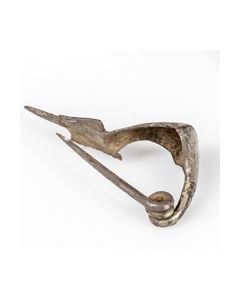 Greek fibula from colonies in Southern Italy
Greek fibula from colonies in Southern ItalyNice silver brooch from the colonies in Southern Italy. Late classical to early hellenistic period.
Price: on request Hellenistic oil lamp manufactured in Asia Minor
Hellenistic oil lamp manufactured in Asia MinorHuman head in high relief on nozzle top, possibly a theater mask. Excellently preserved, from and old German collection, acquired in the 1960s - 1970s.
Price: on request Large Attic terracotta figure of a woman
Large Attic terracotta figure of a womanDelicate work of art, very nicely preserved. From the collection of Professor Robert McElderry (1869 – 1949), acquired in Greece in the 1930s
Price: on request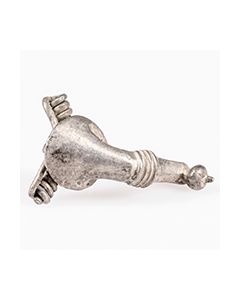 Pannonian trumpet brooch
Pannonian trumpet broochWell preserved Roman fibula made of silver. The type is from the Pannonian provinces of Rome and dates to the 2nd century.
Price: on request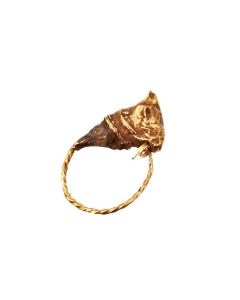 Hellenistic gold earring with bull
Hellenistic gold earring with bullElaborate earring with twisted band and plastic head of a bull. The piece dates to hellenistic times and was skillfully made of gold wire and sheet.
Price: on request Roman gilt crossbow brooch
Roman gilt crossbow broochInteresting silver fibula from the later Roman Imperial period. From the famous Leo Mildenberg collection.
Price: on request Roman gold ring with intaglio
Roman gold ring with intaglioThe beautiful ring from Roman Imperial times is decorated by an intaglio of vibrant red carnelian stone. It shows the goddess Athena.
Price: on request Brooch from Roman Britain
Brooch from Roman BritainA rare mixture of cicada fibula and trumpet fibula, from the 2nd century. Found on the Isle of Wight.
Price: on request Early Etruscan fibula
Early Etruscan fibulaThe early Etruscan bronze brooch is characterized by its artistically decorated bow. A find from northern Italy.
€140 Roman jar with handle
Roman jar with handleRoman Empire, 3rd century AD, excellently preserved. From and old German collection, acquired in the 1960s - 1970s.
Price: on request Hellenistic clay figurine of a standing woman
Hellenistic clay figurine of a standing womanGood condition, white grounding partially preserved. Acquired 1978 at Davies Antiques Gallery, London.
Price: on request Etruscan "a baule" type earrings
Etruscan "a baule" type earringsSkilfully made pair of gold earrings with filigree. The ancient jewellery is from the Golden Age of the Etruscans around the 6th century BC.
Price: on request Roman silver knee brooch
Roman silver knee broochNice specimen with characteristic bend in its bow and incised decorations. From the Danubian provinces of the Roman Empire.
Price: on request Etruscan "a baule" type earrings
Etruscan "a baule" type earringsSkilfully made pair of gold earrings with filigree. The ancient jewellery is from the Golden Age of the Etruscans around the 6th century BC.
Price: on request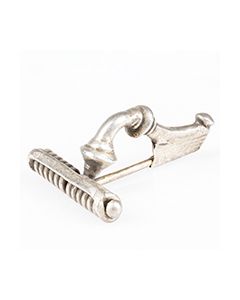 Roman silver fibula
Roman silver fibulaBeautiful brooch from the eastern Roman provinces. Remains of an original gold plating can still be seen on the surface.
Price: on request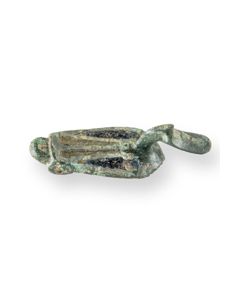 Bird brooch from Roman Britain
Bird brooch from Roman BritainNice fibula in the shape of a stylized water bird. A find from Britain and probably also a local Roman provincial production.
Price: on request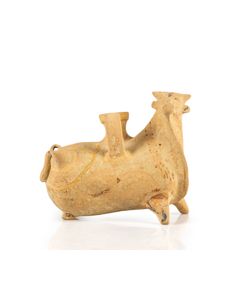 Greek bull askos from Sicily
Greek bull askos from SicilyA find from the Greek settlement of Gela in Sicily. Great example of local pottery production in the 5th century BC. The askos offered here was extensively researched and described by Prof. Dr. Isler from the University of Zurich.
Price: on request Greek clay figurine of a standing woman
Greek clay figurine of a standing womanAbout 6th - 5th century BC. Good condition. From a German private collection, acquired 1976 - 1978 in London.
Price: on request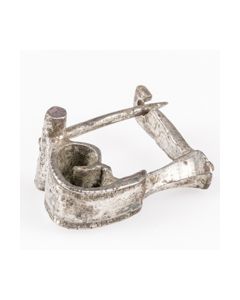 Roman silver fibula from Pannonia
Roman silver fibula from PannoniaInteresting brooch type from the Roman Pannonian provinces. A very similar piece was found near the Roman camp and settlement of Carnuntum in what is now Austria.
Price: on request Pannonian trumpet brooch
Pannonian trumpet broochWell preserved Roman silver fibula with curved bow. The type is from the Pannonian provinces of Rome and dates to the 2nd century.
Price: on request Roman terra sigillata bowl with wild boar reliefs
Roman terra sigillata bowl with wild boar reliefsRoman Empire, 1st - 3rd century AD, excellently preserved. From and old German collection, acquired in the 1960s - 1970s.
Price: on request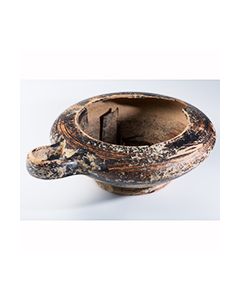 frühkorintisches Exaleiptron - rar
frühkorintisches Exaleiptron - rarFlache Schale mit konvexer Wand und n.i. hängender Lippe. Seltene Bemalung für diese Form.
Price: on request Griechische Skyphos im Gnathiastil
Griechische Skyphos im GnathiastilTrinkschale mit zwei Henkeln und sehr reichem Dekor, schöner als referenziertes Museumsexemplar.
Price: on request Hellenistic clay figurine of a standing woman
Hellenistic clay figurine of a standing womanSouth Italian, following conception of Tanagra figurines. From a Swiss private collection, acquired in the early 1980s.
€1,700 Large Apulian Pelike with thermoluminescence analysis
Large Apulian Pelike with thermoluminescence analysisDelicate piece of art, from an old German private collection. Acquired in the early 1980s in a Cologne art gallery.
Price: on request Roman terra sigillata jar
Roman terra sigillata jarRoman Empire, 1st - 3rd century AD, excellently preserved. From and old German collection, acquired in the 1960s - 1970s.
Price: on request Large Roman Terra Sigillata bowl
Large Roman Terra Sigillata bowlDelicate, perfectly preserved pottery bowl from an old German private collection, acquired in 1979. Reported to have been found in El Djem, Tunis.
Price: on request Small Roman amphora from El-Djem, Tunis
Small Roman amphora from El-Djem, TunisPossibly produced in Hispania Baetica. From a very old German collection
Price: on request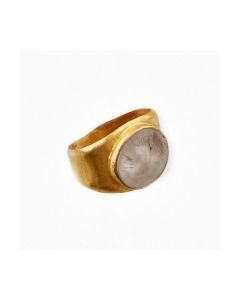 Roman gold ring with intaglio
Roman gold ring with intaglioA lovely piece of Roman jewellery in good condition. The chalcedony intaglio shows a portrait head. Dating to the 3rd century AD.
Price: on request Tear shaped roman glass flask
Tear shaped roman glass flaskElegant long flask from Roman Imperial times. Fantastic colourful iridescence.
Price: on request Impressive massive Roman bronze oil lamp with bird
Impressive massive Roman bronze oil lamp with birdFrom a German private collection, acquired 1982 at Kunsthaus Lempertz, Cologne, Germany. The bird possibly depicts a dove, a popular symbol among the early Christians, symbolizing the Holy Spirit.
Price: on request

